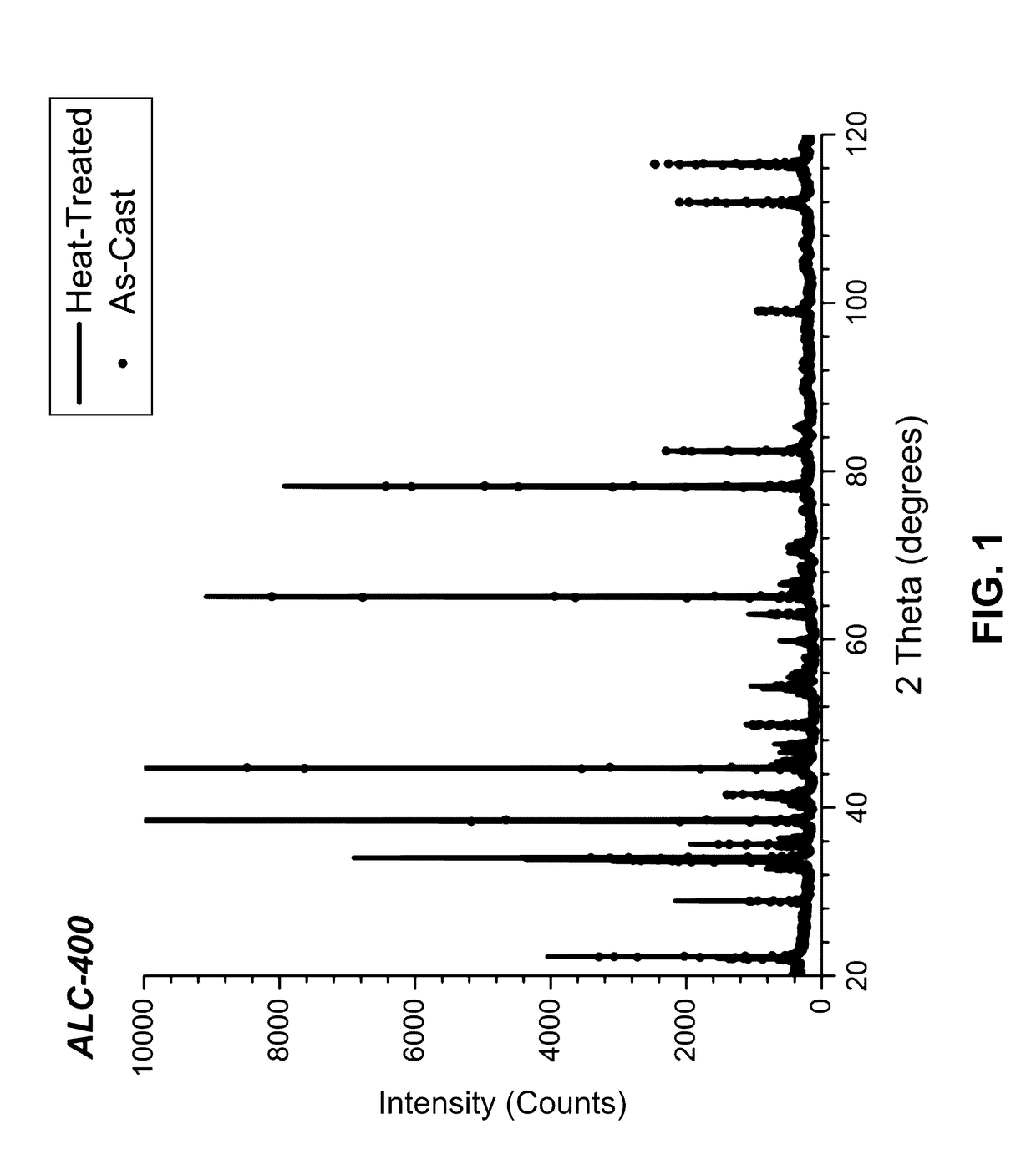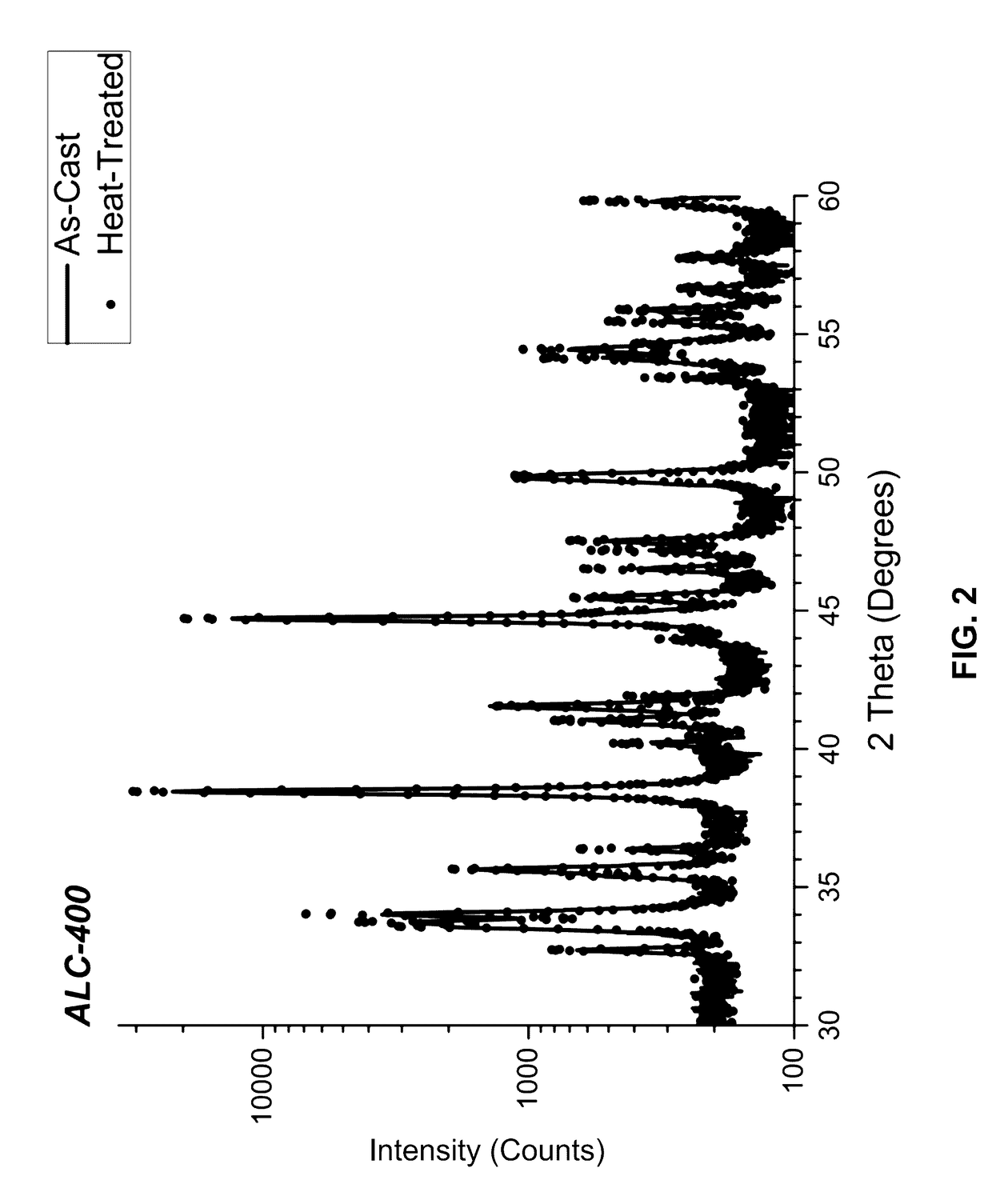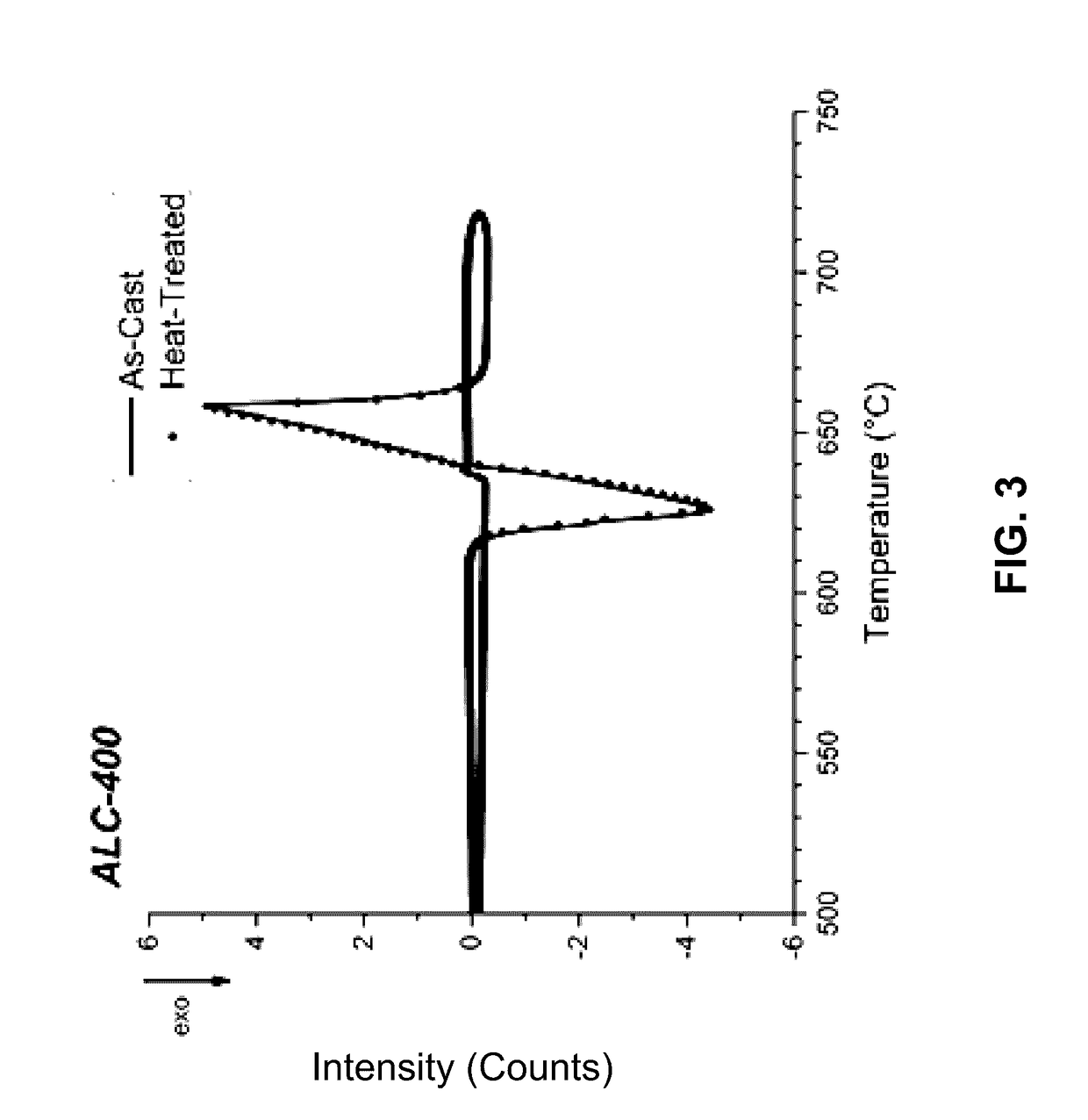Castable High-Temperature Ce-Modified Al Alloys
a cemodified al alloy and high-temperature technology, applied in the field of cemodified al alloys, can solve the problems of limited application and development of aluminum alloys
- Summary
- Abstract
- Description
- Claims
- Application Information
AI Technical Summary
Benefits of technology
Problems solved by technology
Method used
Image
Examples
example i
[0263]Alloy ALC-400 having a composition of 12% Ce, balance Al was made as follows: Aluminum ingots were melted in a resistive furnace under and oxygen excluded environment and brought to a temperature above 750° C. Once the temperature in the crucible was stable ingots of cerium were added and mixed until melted. Once melted the alloy was degassed and mixed further. After the temperature in the crucible again stabilized above 750° C. the melt was poured into various molds, including at least one of: a preheated permanent test-bar mold, a near net shape sand hot-tear mold, and a step-plate mold. The molds employed for testing were kept at room temperature; the step-plate molds contained either and iron chill or a copper chill.
[0264]After the alloy was cast and broken from the mold test-bars were heat-treated using a T6 heat-treatment. FIGS. 1, 2 show, respectively, full and focused XRD spectra of both the as-cast and the heat-treated sample. In all XRD spectra disclosed herein the p...
example ii
[0269]Alloy ALC-200 having a composition of 8% Ce, balance Al was made and tested as described above in Example I. FIGS. 11, 12 show, respectively, full and focused XRD spectra of both the as-cast and the heat-treated sample. FIG. 13 shows DSC curves of both the as-cast and the heat-treated samples. FIG. 14 shows an equilibrium solidification diagram, which indicates an expected lower concentration of the intermetallic microstructure when compared with alloy ALC-400. FIGS. 15, 16 are respective SEM images showing the microstructure of as-cast and heat-treated alloy ALC-200.
[0270]Mechanical properties of as-cast and heat-treated alloy ALC-200 are presented in Table 2.
TABLE 2Phase FractionPhaseBinaryTensileYieldElongationFraction FCCIntermetallicALC-200(KSI)(KSI)(%)(wt %)(wt %)As-Cast21.5—15.089.410.6Trial 1As-cast21.4—19.0——Trial 2T6 Trial 118.06.225.589.210.8T6 Trial 217.78.526.5——
[0271]FIGS. 17, 18 are SEM images of respective fracture surfaces of as-cast and heat-treated alloy ALC...
example iii
[0272]Alloy ALC-300 having a composition of 10% Ce, balance Al was made and tested as described above in Example I. FIGS. 21, 22 show, respectively, full and focused XRD spectra of both the as-cast and the heat-treated sample. FIG. 23 shows DSC curves of both the as-cast and the heat-treated samples. FIG. 24 shows an equilibrium solidification diagram. FIGS. 25, 26 are respective SEM images showing the microstructure of as-cast and heat-treated alloy ALC-300.
[0273]Mechanical properties of as-cast and heat-treated alloy ALC-300 are presented in Table 3.
TABLE 3Phase FractionPhaseBinaryTensileYieldElongationFractionIntermetallicALC-300(KSI)(KSI)(%)FCC (wt %)(wt %)As-Cast22.2—8.085.315.7Trial 1As-cast21.7—8.5——Trial 2T6 Trial 118.76.724.086.613.4T6 Trial 218.66.624.0——
[0274]FIGS. 27, 28 are SEM images of respective fracture surfaces of as-cast and heat-treated alloy ALC-300. FIGS. 29, 30 show the castings conducted to determine alloy castability. Castability of ALC-300 was determined to...
PUM
| Property | Measurement | Unit |
|---|---|---|
| Temperature | aaaaa | aaaaa |
| Temperature | aaaaa | aaaaa |
| Temperature | aaaaa | aaaaa |
Abstract
Description
Claims
Application Information
 Login to View More
Login to View More - R&D
- Intellectual Property
- Life Sciences
- Materials
- Tech Scout
- Unparalleled Data Quality
- Higher Quality Content
- 60% Fewer Hallucinations
Browse by: Latest US Patents, China's latest patents, Technical Efficacy Thesaurus, Application Domain, Technology Topic, Popular Technical Reports.
© 2025 PatSnap. All rights reserved.Legal|Privacy policy|Modern Slavery Act Transparency Statement|Sitemap|About US| Contact US: help@patsnap.com



